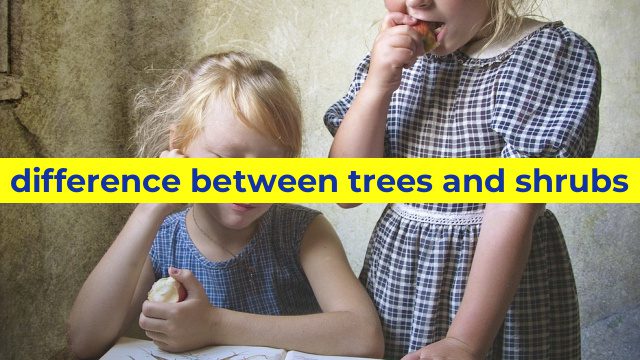The Key Differences between Trees and Shrubs
When it comes to landscaping and gardening, trees and shrubs are two top choices for their aesthetic value and environmental benefits. Both plants have a significant impact on our surroundings; however, they differ in various ways. Let’s explore some essential differences between trees and shrubs.
Size and Structure
One of the most significant physical differences between trees and shrubs is their size and structure. Trees typically grow taller than shrubs, with a single woody stem (trunk) that gives rise to numerous branches and leaves. Trees’ height can range from a few feet to as high as 100 feet or more. In contrast, shrubs generally have several stems that grow from the base of the plant and spread out to form a bushy appearance. Although some shrubs may grow as tall as trees, most of them are smaller, ranging from one to ten feet.
Lifespan
Trees tend to live longer than shrubs. Depending on their species, some trees can live for several hundred to thousands of years, while shrubs usually have a shorter lifespan ranging from 5 to 50 years. Furthermore, trees invest a considerable amount of time and energy into their growth, making them more resilient to harsh environmental conditions than shrubs.
Environmental Impact
Both trees and shrubs provide us endless environmental benefits. They play a crucial role in purifying the air we breathe, reducing soil erosion, providing habitats for wildlife, and lowering temperatures in urban areas, among many others. However, trees tend to store more carbon than shrubs, making them more efficient at mitigating climate change. Additionally, trees release a higher amount of oxygen and are generally more effective in absorbing pollutants from the air than shrubs.
Landscaping and Gardening uses
When it comes to landscaping and gardening, trees and shrubs offer different uses. Trees are usually used as a focal point or shade tree in larger landscapes, while shrubs are used as borders, hedges, and foundation plantings in smaller gardens. Trees offer a vertical element to a landscape, while shrubs can provide texture, color, and shape.
In Conclusion, trees and shrubs may look similar at first glance, but they have essential differences that make them unique. Understanding these differences can help you make wise decisions when selecting, planting, and caring for these plants in your landscape.
Table difference between trees and shrubs
| Characteristics | Trees | Shrubs |
|---|---|---|
| Size | Generally taller, with a single trunk and a more prominent canopy. | Generally smaller, with multiple stems and a less prominent canopy. |
| Growth Habit | Usually grow upwards, with a central main stem or trunk. | Usually grow outwards, with multiple stems branching out from the base. |
| Wood | Generally have harder wood and are more long-lived. | Generally have softer wood and are shorter-lived. |
| Leaves | Have larger leaves that are generally broad and flat. | Have smaller leaves that are typically narrower and more elongated. |
| Root System | Usually have a deeper, more extensive root system. | Usually have a shallower, less extensive root system. |
